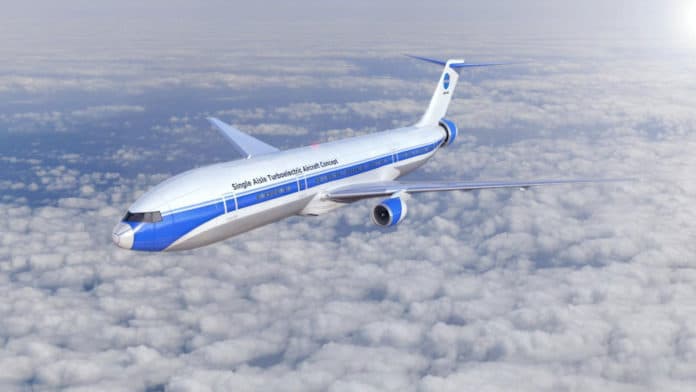Nasa is known for adopting innovative technologies. Now, scientists are making current aircraft more energy-efficient, by developing cutting-edge technologies that will dramatically reduce fuel usage.
The idea is STARC-ABL i.e., single-aisle Turboelectric Aircraft with an Aft Boundary-Layer propulsion. Currently, the concept is under consideration as one of NASA’s future X-planes.
This next-gen aircraft looks similar to the proven tube-and-wing aircraft you see every day. But, unlike those aircraft, a significant amount of electrical power, approximately three megawatts, is used for turboelectric propulsion, in addition to the electrical operation of subsystems like flight controls, avionics and de-icing.
Scientists planning to place a large turbofan engine on the rear of a plane, where it will collect the slow-moving air traveling along the plane‘s body. The wing-mounted engines supply 80 percent of the thrust required during takeoff and 55 percent at cruise, while the tail-mounted, all-electric BLI turbofan accounts for remaining thrust. Thus, it can improve fuel consumption up to 10 percent using this innovative system.
NASA recently awarded 12-month contracts to Boeing, teamed with Georgia Tech, and Liberty Works, with ES Aero, to develop preliminary single-aisle, 150-seat aircraft designs using promising electric-enhanced propulsion and vehicle configuration concepts.
Amy Jankovsky, NASA’s AATT subproject manager said, “During the 12-month cycle, we’ll work with the teams to take a deep dive into their hybrid and turboelectric aircraft concepts.”
“These concepts will provide in-depth, detailed analyses of the propulsion and electrical systems, and we will recommend technology development paths for their concepts.”
“As we move forward, we’d like to further develop the powertrains for these and any other concepts that may prove viable by building and testing them at NEAT and other NASA facilities.”
“We’ll identify key performance parameters for components such as motors, generators and power electronics, and any wind tunnel, altitude, and other ground tests and flight demonstrations that are appropriate.”
